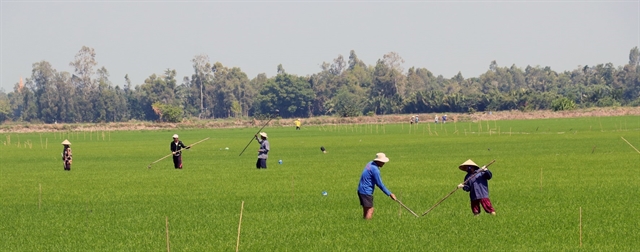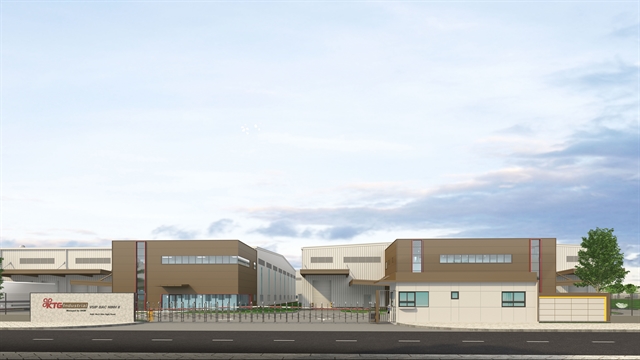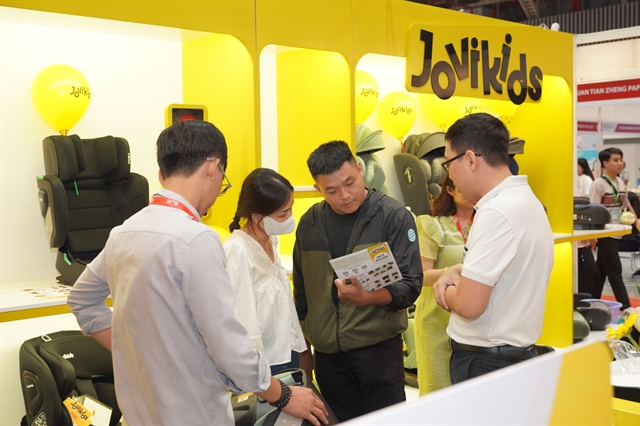 Society
Society

The Cửu Long (Mekong) Delta province of Kiên Giang has identified 16 key products to focus on to increase the competitiveness of its agriculture.

|
| The 2019 – 20 winter – spring rice crop being planted in Kiên Giang Province’s Gò Quao District with support from the Việt Nam-Sustainable Agriculture Transformation programme. — VNA/VNS Photo Lê Huy Hải |
KIÊN GIANG — The Cửu Long (Mekong) Delta province of Kiên Giang has identified 16 key products to focus on to increase the competitiveness of its agriculture.
Its Department of Agriculture and Rural Development said they include rice, vegetables, mango, pineapple, sugarcane, high-value seafood, and livestock and poultry.
Đỗ Minh Nhựt, its deputy director, said: “The province develops key agricultural products in four sub-regions: the Long Xuyên Quadrangle, the western part of the Hậu River, U Minh Thượng, and the sea and islands.”
It would zone crops, aquaculture and animal husbandry suitably in each sub-region and develop safe, sustainable and efficient production, he said.
To improve the yield, quality and value of key products, it has adopted advanced farming techniques and focused on environmental protection, he said.
It has more than 100,000ha of specialised farming areas with value chains in place for rice, vegetables, mango, pineapple, sugarcane, and some others since 2017.
The country’s largest rice producer has created 163 large-scaled rice fields with a total area of 47,680ha by pooling individual farmers’ holdings and involved 20 companies in it to guarantee demand for the participating farmers.
It has developed 300ha of shrimp farms that use advanced breeding technologies like semi-biofloc and biofloc and harvest 30-50 tonnes per hectare per crop.
It has also set up six two-stage industrial shrimp breeding sites for farmers to learn the model under which juvenile shrimp are bred in a nursery pond for a few weeks before being transferred to a main pond.
The pond beds are covered with plastic sheets and equipped with oxygenation facilities. Nets are hung above the water to protect the shrimp from sunlight and the inclement weather.
The model offers a yield of 26 tonnes, and wastewater is treated before being released into the environment.
The province has also developed models for breeding marine fish in floating cages based on Norwegian techniques off Phú Quốc Island.
Many areas it has zoned for farming rice, vegetables, pepper, and pineapple and breeding aquatic species meet good agricultural practices (GAP) standards.
VnSAT
The implementation of Việt Nam-Sustainable Agriculture Transformation (VnSAT) Project in Kiên Giang Province in 2015-20 has helped increase rice farmers’ incomes by VNĐ3.5-4 million (US$150-172) per hectare per crop, according to the department.
It has helped protect the environment, build infrastructure and buy equipment for rice farming.
Nhựt, deputy director of the department, said the programme had provided training in rice cultivation, created new rice growing models and helped farmers rotate crops and grow seedlings.
VnSAT, implemented by the Ministry of Agriculture and Rural Development in co-operation with relevant ministries and the World Bank, is also being carried out in all five provinces in the Tây Nguyên (Central Highlands) region and eight provinces in the Mekong (Cửu Long) Delta.
It seeks to improve the competitiveness of the agricultural sector, especially rice and coffee, to improve farmers’ incomes and reduce the environmental impacts.
In Kiên Giang, the programme has benefited more than 87,520 farmers and 21,600ha of rice by introducing sustainable practices which have increased their incomes by 28 per cent.
It has also provided subsidies of VNĐ97.4 billion ($4.2 million) to 11 co-operatives for a project each.
According to Nguyễn Văn Huỳnh, director of Phú Hòa Youth Agriculture Service Co-operative in Tân Hiệp District’s Tân Hội Commune, VNĐ7.7 billion ($332,000) has been provided through the programme to build infrastructure including sluices and roads.
The co-operative’s 615ha of rice farms grow three rice crops a year with an average yield of 19 - 20 tonnes per hectare per year.
The average annual income of its members is VNĐ45-50 million ($1,940-2,160).
The co-operative plans to seek more subsidies to build roads and water pumping stations to improve its infrastructure further for producing rice safely, sustainably and efficiently, especially for exports.
The programme is being carried out in Rạch Giá City and the seven districts of Tân Hiệp, Châu Thành, Giồng Riềng, Hòn Đất, Giang Thành, Gò Quao, and U Minh Thượng with VNĐ313 billion ($13.5 million) raised from various sources.
The province will continue to implement it, fostering farmers who use advanced techniques to grow environmentally friendly rice, according to the department.
The techniques include the ‘3 reductions and 3 increases,’ which advocates a reduction in the use of seeds, fertilisers and plant protection chemicals to improve productivity, quality and efficiency. — VNS

.jpeg)


